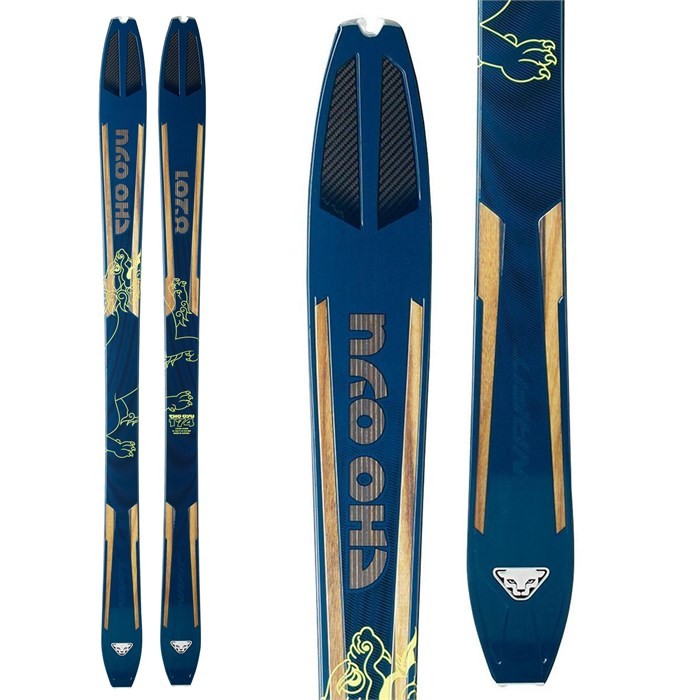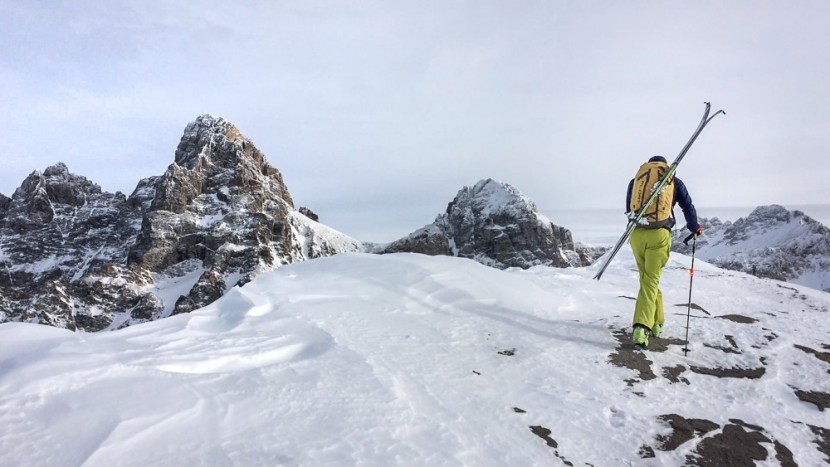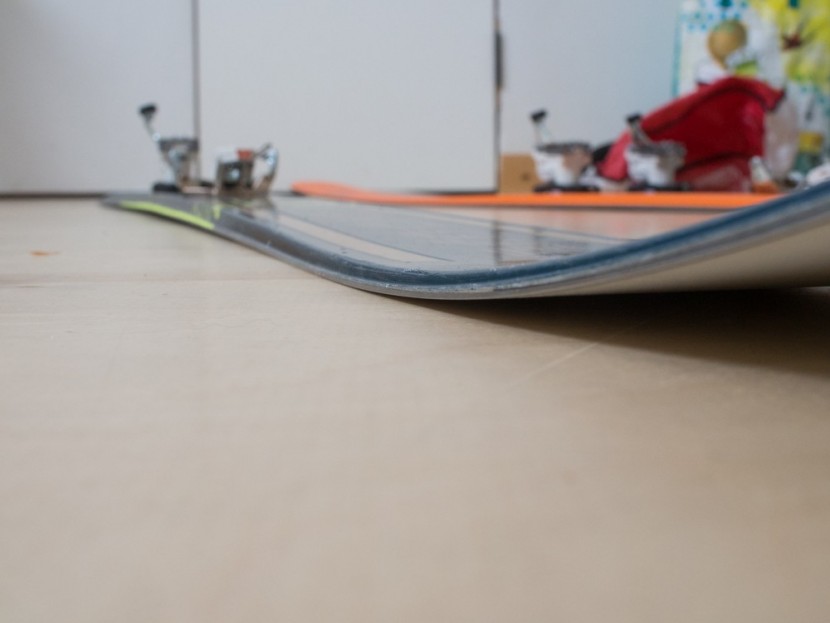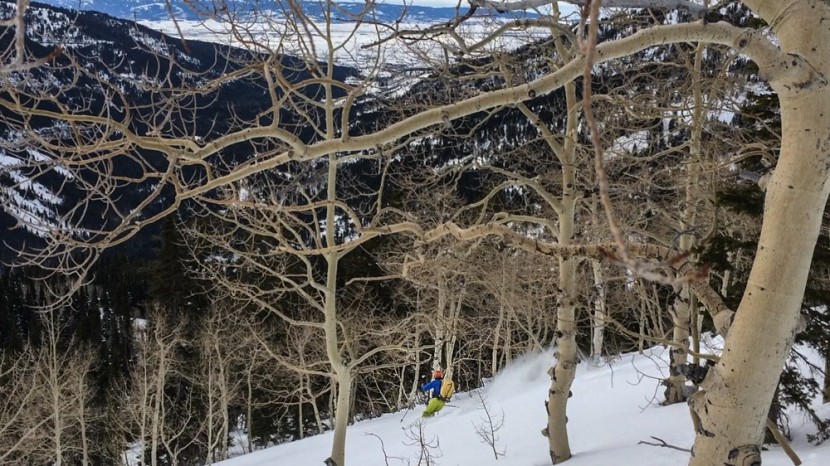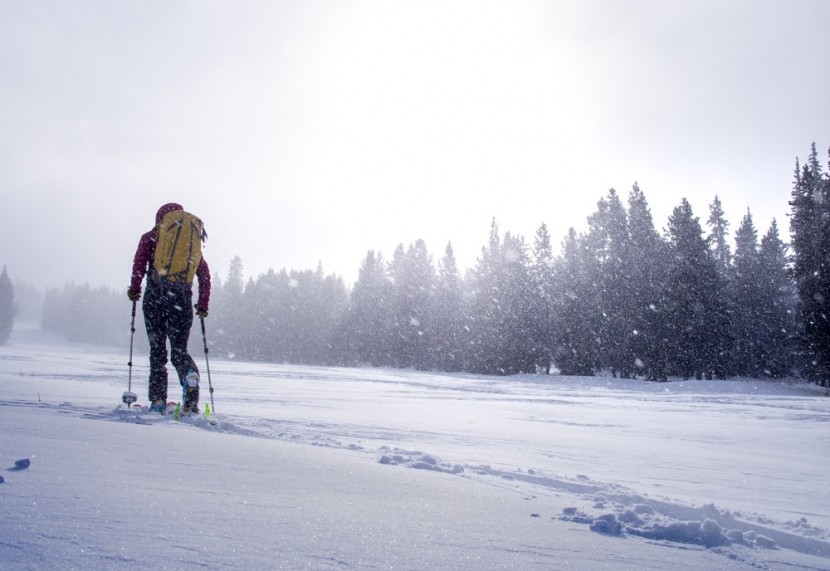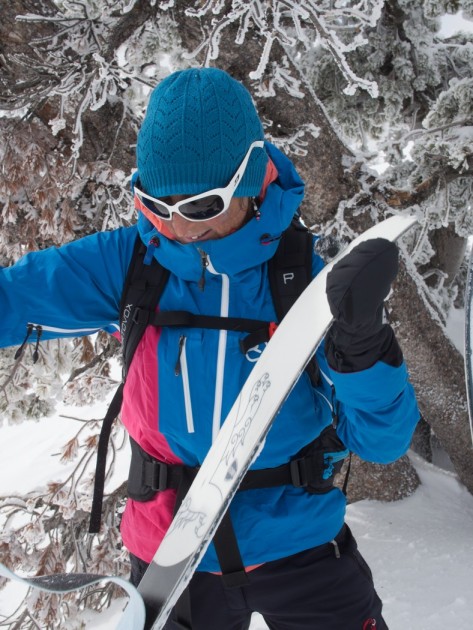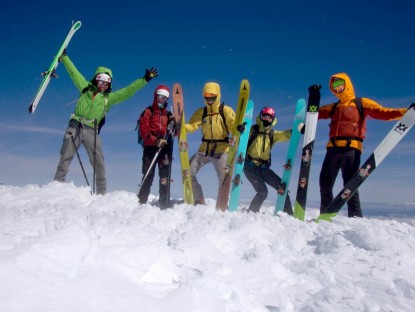Dynafit Cho Oyu Review
Our Verdict
Our Analysis and Test Results
The Dynafit Cho Oyu is a solid, lightweight, steep and firm skiing specialist that can be pressed into duty on softer missions.
Weight
The Cho Oyu is the second lightest ski in our entire review. Only the La Sportiva Vapor Nano is lighter. The difference between the Vapor and the Cho Oyu, however, is minimal. Only 16 grams separate them. This is a tiny difference. All else equal, the difference in the width of the skins you use on the way up (the La Sportiva skis are quite a bit wider than the Cho Oyu) will make the Nanos heavier. Narrow skis have lighter skins, and those narrower skis collect less snow on the surface, keeping them lighter on the approach. The Cho Oyu is light to begin with, and the narrow profile makes them even lighter in actual application.
Two other skis in our review are similar in weight. The Top Pick for Powder Touring DPS Wailer 99 Tour is 49 grams heavier per ski than the Cho Oyu while our Best Buy winning Fischer Hannibal is just 10 grams heavier. Because of differences in skins and bindings, these weights can be considered almost identical to one another. Further distinguishing them is the amount of weight that can accumulate on the top sheet of touring skis. Wider skis collect more snow, and darker colored skis collect more snow. The color thing is the first and only demerit to the Cho Oyu's weight score. The dark top sheet, particularly in lower latitude ski regions, collects far more snow than that of lighter colored skis. In general, especially for the Cho Oyu's spring skiing applications, this is not a huge deal. The Cho Oyu is a super light touring ski.
Stability at Speed
Usually we expect narrow and light skis to have trouble with stability. The Cho Oyu doesn't have the solidness of a dedicated all-mountain resort ski, by any means. Nor is it as stable as our Editors' Choice V-Werks BMT 90. However, it does hold up surprisingly well, considering its narrow dimensions. Once we let go of any false illusions about the reality of skiing such a small ride (and small is a relative term; 15 years ago 88 mm skis were the biggest touring skis available), our testing team had no disappointment with the stability of the Cho Oyu. If you consider stability in steep, technical terrain, the Cho Oyu surges ahead. The narrow profile and relatively stiff construction is just what a rider on steep, firm terrain wants.
Note that our approval of the stability of the Cho Oyu needs to be put into context. For lightweight touring skis, it is a stable ride. That being said, compare it to bigger guns like the K2 Wayback 104, not to mention our Top Pick for Speed Dynafit Chugach and the Cho Oyu comes out looking like a nervous wreck at high pace. We applaud the Cho Oyu for its stability, compared to other skis in its weight class.
Firm Snow
This is where the Cho Oyu excels. As the narrowest ski in our test (by half a centimeter), we are not surprised by the edge hold and reliability on firm snow. The modern trend to bigger and bigger skis, especially in the backcountry, has changed everyone's expectations on firm snow. If you are accustomed to riding 100 mm+ skis, even on firm snow, you have grown accustomed to the inherent compromise in edge hold. Bucking the trend and skiing narrower sticks is a pleasant diversion and a great way to reinvigorate one's appreciation of the firmer stuff. Our testing team argues that more people would enjoy firm and corn snow if they were riding narrower skis.
In our review, the wider skis like the La Sportiva Vapor Nano and K2 Wayback 104 did not fare as well on firm snow. While wider, all-mountain resort skis can be tuned to ski well on the firm, they end up heavy in the process. Even heavy backcountry skis can be made to grab on ice. See the Top Pick winning Dynafit Chugach for a product that essentially brings resort performance to backcountry branding. For extensive, human-powered backcountry use, the lightweight wide-body skis will never grip like beefier resort skis or narrower backcountry specific products. This fact is why we have awarded our Top Pick for Firm Snow award to the Cho Oyu.
Powder
At first glance it would appear that firm snow performance and powder snow performance are at odds. After all, they are as opposite as snow can get, intuitively speaking. In application, however, perfect powder snow is easy and enjoyable to ski, regardless of the width of the ski. Our lead tester, for instance, grabbed the Cho Oyu for a 15,000 foot day of touring. The final run of that epic day was perfect powder in fading light. The bouncy ride, on tired legs, in purple light is an experience that all of his senses remember with fondness. His wife used Cho Oyu skis for a single 11,000 foot powder run on Alaska's Mount Sanford. She didn't complain.
Again, an intermediate to expert practitioner of backcountry skiing will enjoy moderate to steep powder riding on almost any tool. Big skis help when it gets lower angled, but at the upper angles width does not matter. The Cho Oyu, as a narrow ski, is still very enjoyable in good powder snow. For example, we had back to back powder days on Teton Pass through the holiday season of 2015. Riding the Wailer 99s one day and the Cho Oyu the next resulted in basically equivalent enjoyment.
Crud/Poor Snow
If powder snow doesn't actually reward fat skis, and firm snow requires a narrower profile, it is the crappier snow that tips the balance. When the snow gets bad, the big get going. Narrow and light tools like the Cho Oyu suffer when it is crusty or sloppy. There is no way around it. Mass and surface area do better in poor snow. The Cho Oyu is not our tool of choice for sunny or windy climates in mid-winter. Sun and wind degrade mid-winter snow, resulting in crusty conditions that challenge technique and equipment. On something like the long rockered, wide-waisted K2 Wayback 104, wind and sun crusts go virtually unnoticed. A strong skier can ski weak to moderate breakable crust with little to no adjustment. If and when that same skier encounters the same conditions on something like the Cho Oyu, he or she must slow down, step and stem the turns more methodically, and pick the path wisely. Survival is possible, but the kinetic experience is tempered.
Best Applications
The Cho Oyu is a great tool for spring skiers along the coasts of North America. Whether you are hunting Cascade Volcanoes, Sierra traverses, or the party scene in Tuckerman Ravine, corn in all its flavors succumbs to the charms of the Cho Oyu. Similarly, steep ski mountaineering, especially with long approaches and big vertical, are a great venue for the Dynafit. If any of this describes your predominant experience, yet you also want to ski the occasional mid-winter powder lap, check out the Cho Oyu. If you only ski the steep and firm or long and corny, there are even more specialized tools out there for you. Despite its leanings, the Cho Oyu is still not the most specialized firm and steep ski on the market. Those skis that are even better for the narrowest of conditions did not make our initial selection criteria.
Value
The Cho Oyu is not the least expensive in our test, but it is far from the most. Dynafit has been making skis for awhile, and their lightweight offerings have shown to have average to above average durability, as compared to the rest of the market.
Conclusion
In selecting our award winners, we give specialized products the Top Pick award. In a general category like backcountry skis, the differences are often subtle and minor. As much as we make of the firm snow performance of the Cho Oyu, it is still an excellent all-around product. It has its preferences, but it will work, and we have used it, in all conditions.
Recommended Pairings
Use the Best Buy Dynafit Speed Turn, or better yet some sort of randonee race binding on your Cho Oyu skis. Pair them with Dynafit Speedskins and a set of Dynafit TLT6 Mountain boots for a full Austrian ski mountaineering set-up.
Accessories
Dynafit Speedskin Cho Oyu
- Cost - $190
- Purpose built skins for the Cho Oyu


